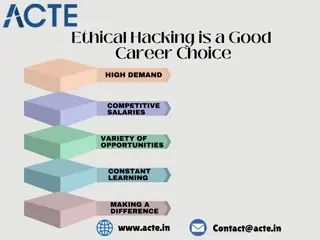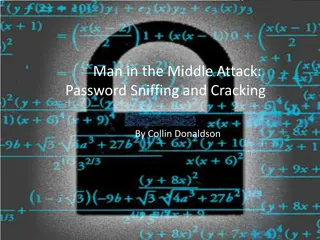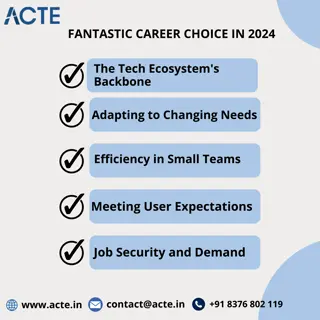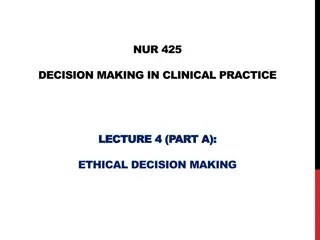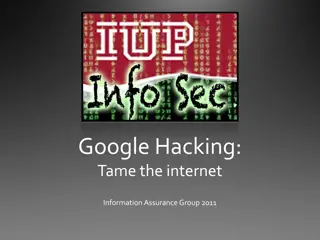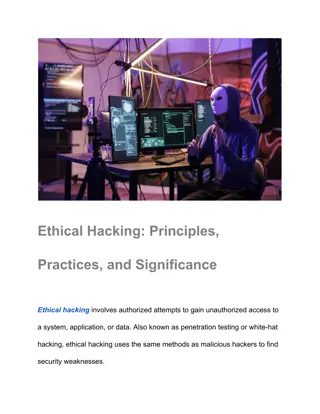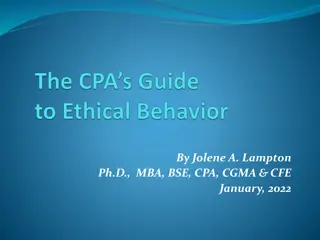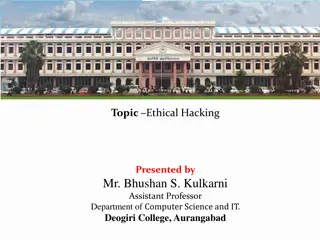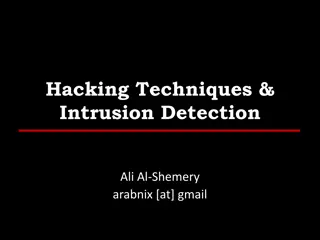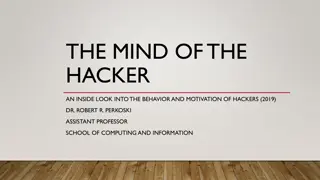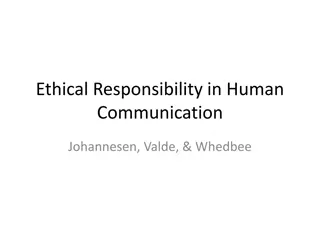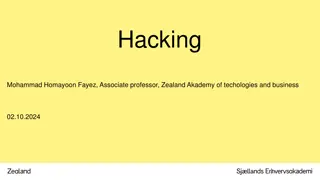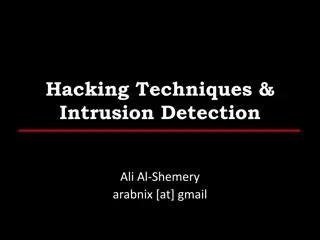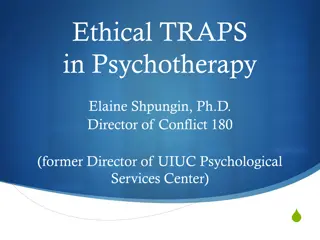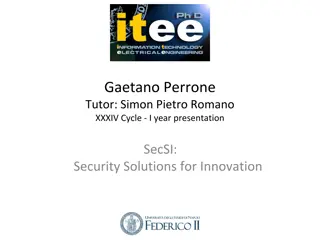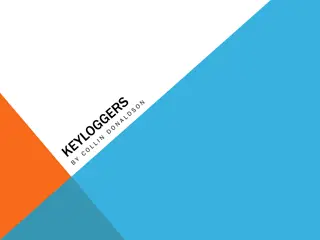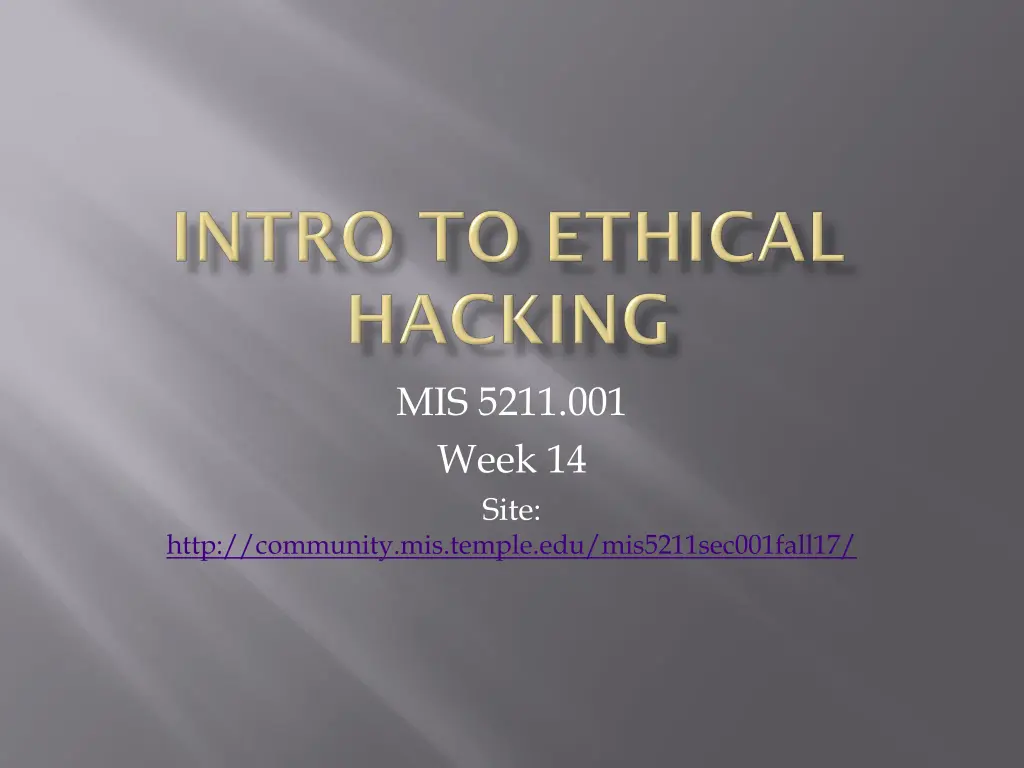
Understanding Cloud Computing: Key Concepts and Deployment Models
Explore the key concepts of cloud computing, including virtualization, scalability, and deployment models like private, community, public, and hybrid. Learn about the benefits and features of cloud computing as defined by NIST, and gain insights into the differences between virtualization and the cloud.
Download Presentation

Please find below an Image/Link to download the presentation.
The content on the website is provided AS IS for your information and personal use only. It may not be sold, licensed, or shared on other websites without obtaining consent from the author. If you encounter any issues during the download, it is possible that the publisher has removed the file from their server.
You are allowed to download the files provided on this website for personal or commercial use, subject to the condition that they are used lawfully. All files are the property of their respective owners.
The content on the website is provided AS IS for your information and personal use only. It may not be sold, licensed, or shared on other websites without obtaining consent from the author.
E N D
Presentation Transcript
MIS 5211.001 Week 14 Site: http://community.mis.temple.edu/mis5211sec001fall17/
Cloud Primer VMWare Networking Patching Review Questions? MIS 5211.001 2
First things First There is no cloud It is just somebody else's computer No magic Nothing Special MIS 5211.001 3
First question I asked many years ago was What is the difference between virtualization and Cloud. Here s the answer I eventually got. Cloud is just a virtualized environment with an additional layer of management tooling. This answer still seems to make sense. MIS 5211.001 4
From NIST: Cloud computing is a model for enabling ubiquitous, convenient, ondemand network access to a shared pool of configurable computing resources (e.g., networks, servers, storage, applications, and services) that can be rapidly provisioned and released with minimal management effort or service provider interaction. MIS 5211.001 5
http://pleasediscuss.com/andimann/20110330/new-cloud- reference-architecture-from-nist/nist-cloud-ref-architecture/ MIS 5211.001 6
Elasticity Virtualization Scalability Simplicity Risk Reduction Cost Expandability Mobility Collaboration and Inovation MIS 5211.001 7
Deployment Models https://technet.microsoft.com/en- us/library/hh509051.aspx MIS 5211.001 8
More on Deployment Models Private Provided for exclusive use of a single organization Community Provided for exclusive use of a specific community Public Open to use by all Hybrid Mix from above MIS 5211.001 9
Service Models https://blogs.partner.microsoft.com/mpn- canada/transitioning-premise-virtual-machines-cost- effective-azure-cloud-models/ MIS 5211.001 10
Infrastructure Cloud provider hosts your server build and may host virtual network components that you are responsible for Platform Cloud provider hosts their server and infrastructure and you can run your applications Software as a Service (SaaS) Provider runs everything, you just use the software Think Office 365, Exchange in the cloud, etc MIS 5211.001 11
Cloud provider is responsible for Security of the Cloud Cloud user is responsible for Security in the Cloud Example: If you build a server in the cloud, it is your job to harden the system and ensure proper access controls MIS 5211.001 12
Generally provided by the Cloud Host You will have very limited (read none) access to logging or info from the cloud providers systems You can sometimes install virtual appliances inside of the cloud such as firewalls, load balancers, etc MIS 5211.001 13
Cloud providers will generally encrypt data at rest However, it is their key(s) May want to also encrypt with your key(s) Should also provide for encryption in transit Should be evaluated during negotiations as to what is possible MIS 5211.001 14
Need to cover Provisioning and deprovisioning Centralized directory services Privileged user management Authorization and access management Especially the difference between authentication and authorization MIS 5211.001 15
Should discuss before signing the contract Options: Cryptographic erasure encrypt and throw away the key Overwriting Note. Drive destruction is not really an option in a cloud environment as data from multiple clients may reside on the same drive and your data may be spread across many drives MIS 5211.001 16
Type I Hypervisor - Running directly on the hardware with virtual machine (VM) resources provided by the hypervisor. These are also referred to as bare metal hypervisors. Examples of these include VMware ESXi and Citrix XenServer. Type II Hypervisor - Run on a host OS to provide virtualization services. Examples of Type II are VMware Workstation and Virtual Box. MIS 5211.001 17
Type II is still an OS, likely to have a greater attack surface MIS 5211.001 18
Breach Data Loss Account Hijacking Insecure APIs Malicious Insiders (Provider and User) Abuse of Cloud Services * Insufficient Due Diligence * Shared Technology Vulnerabilities * MIS 5211.001 19
Think password cracking on steroids Brute forcing encryption MIS 5211.001 20
Cloud development can out pace governance Who s creating guests Are guest machines being shutdown Was their even a business case How much is being done on procurement cards and click through agreements Can anyone in the company even answer the questions above MIS 5211.001 21
Cloud provider business case requires sharing of resources. Your guest machine is on the same host as your competitor (or your attacker) Your data is on the same wire, just logically seperated MIS 5211.001 22
Virtual machine attacks Virtual network attacks Switches Routers NICs Hypervisor Attacks Denial of Service MIS 5211.001 23
Multitenancy Workload Complexity Network Topology Logical Network Segmentation No physical endpoints Single Point of Access MIS 5211.001 24
System and Resource Isolation User Level Permissions User Access Management MIS 5211.001 25
Data Segregation Data Access and Policies Web Application Security MIS 5211.001 26
Storage Volume Storage Think hard drive for a virtual machine like Amazon EBS Object Storage Think file share like Amazon S3 Database As name implies, database as a service, think Amazon Database Services on EC2 or EBS Big Data Data Analytics MIS 5211.001 27
https://pt.slideshare.net/AmazonWebSer vices/stg201-state-of-the-union-aws- storage-services MIS 5211.001 28
Challenges Access to Keys Key Storage Backup and Replication Considerations Random Number Generation No transmission in clear text No storage in clear text Key escrow MIS 5211.001 29
Masking Random substitution Algorithmic substitution Shuffle Masking (Specific characters) Deletion Primary methods of masking data Static: In static masking, a new copy of the data is created with the masked values. Static masking is typically efficient when creating clean, nonproduction environments. Dynamic: Dynamic masking (sometimes referred to as on- the-fly masking) adds a layer of masking between the application and the database MIS 5211.001 30
Substitute with a token value Token to real value table maintained internally in case you need to unravel it. https://securosis.com/blog/ tokenization-use-cases-part-1 MIS 5211.001 31
One cloud consideration is geographic Many nations have rules about where their citizens data resides This may restrict what can go in which cloud Most major cloud providers offer regional data centers to address this issue. MIS 5211.001 32
Cloud computing introduces external service providers. Guest escape Identity compromise, either technical or social API compromise, for example by leaking API credentials Attacks on the provider s infrastructure and facilities Attacks on the connecting infrastructure (cloud carrier) MIS 5211.001 33
Some form of LDAP (Active Directory) Federated Identities SAML (Security Assertion Markup Language) WS-Federation Open-ID OAuth Multifactor Authentication Especially for privileged accounts MIS 5211.001 34
WAF Web Application Firewall DAM Database Activity Monitoring XML Gateways DLP AV Firewalls API Gateways Access control Rate limiting Metrics Security Filtering MIS 5211.001 35
Sub-category of Sand Boxing Application runs in a memory bubble (App-V) isolated from OS services and other applications MIS 5211.001 36
Area to watch Cloud Security Alliance Cloud Vulnerability Working Group https://cloudsecurityalliance.org/group/cloud- vulnerabilities/#_overview Numerous WebEx Session Chance to be in on the discussion as things are identified RedLock Blog https://blog.redlock.io/ MIS 5211.001 37
Alpha Release Still in discussion Could be a good opportunity to get engaged MIS 5211.001 38
https://www.owasp.org/index.php/Cate gory:OWASP_Cloud_%E2%80%90_10_Proj ect MIS 5211.001 39
Other OWASP Cloud-10 Candidates exposure to non-prod and internal environments Integration between cloud and internally hosted services Patching and Vulnerability Management Lack of Transparency in Internal Security Controls and difficulty/complexity of auditing Enterprise Intranets exposed directly on Internet (if they move on a Public Cloud) MIS 5211.001 40
Amazon offers a free three hour online security course https://aws.amazon.com/training/course- descriptions/security-fundamentals/ Course Outline: Introduction to Cloud Computing and AWS Security Access Control and Management AWS Security: Governance, Logging, and Encryption Compliance and Risk Management MIS 5211.001 41
MIS 5211.001 42
Virtual Network Editor Bridged virtual network The VM shares the MAC address of the host but will have a different IP address (just as if the VM and the host were on a hub together) NAT Virtual Networking The VM is connected via network address translation (NAT) to the host network adaptor) Host only The VM can only talk to the host Custom A private VM network that one or more VMs can be connected to; you can offer DHCP on this network If you connect the host network adaptor to a custom network, it becomes a host-only network.. MIS 5211.001 43
MIS 5211.001 44
Ethical Hacking Basic Command Line (Bash and cmd) Reconnasaince Nmap Nessus Intercepting Proxies OWASP Top 10 Basic Crypto Symmetric Asymmetric Encryption vs Encoding MIS 5211.001 45
? MIS 5211.001 46

